


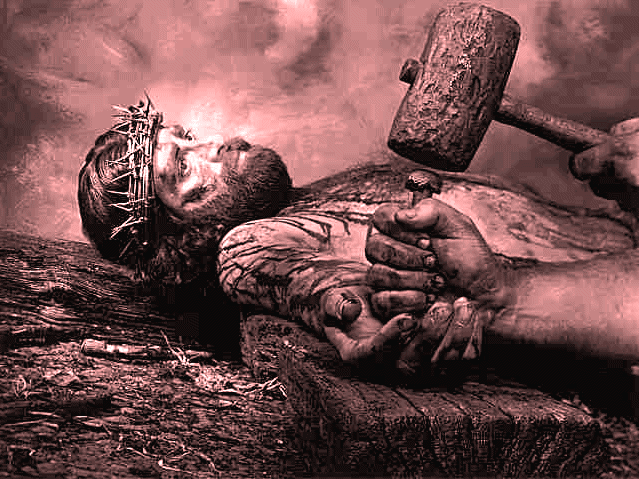
#1 Spring Feast Fulfilled in Christ - Our Passover Lamb
Jesus (Yeshua) was crucified during the Passover event in which a lamb symbolized and foretold God's purpose in sending His own firstborn son as Saviour for any and all who wish to partake.
Jesus and His disciples celebrated the God-ordained and prophetic Passover meal together on the eve of His death. During this meal Jesus said, "This is my body," and "this cup is the new testament in my blood" (Luke 22:7, 19-20). All of those lambs sacrificed (one per household), beginning down in Egypt, pointed to the one true Lamb of God who takes away the sin of the world (John 1:29).
John the Baptist, beholding Jesus arrival, testified of Him "Behold the Lamb of God who takes away the sins of the world." Writing to the Corinthians, the apostle Peter noted for all of time, "Christ, our passover (Lamb), is sacrificed for us" (I Corinthians 5:7).
It was in the context of God shaking a prison's foundations to release His disciples that they then spoke to those in fear (of God) "Believe in the Lord Jesus, and you will be saved, you and your household."
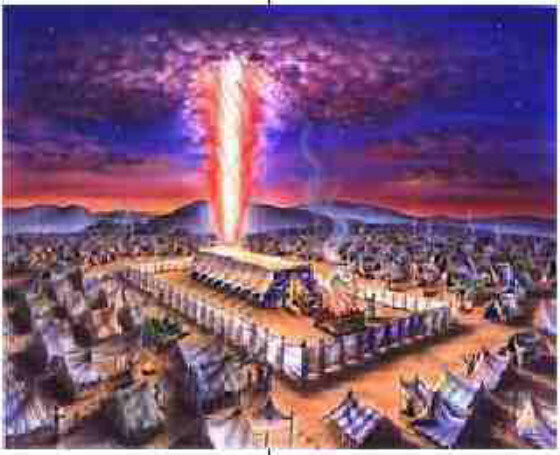
#7 Fall Feast To Be Fulfilled in Christ - Our Feast of Tabernacles
The final God-ordained feast will take us beyond the final seven years of Tribulation. The seventh feast, the joyous Feast of Tabernacles, will come into its ultimate fulfillment as the true new age dawns with the return of Christ to earth. This will bring in the Millennium of Messiah, that glorious age to come. The deserts will bloom and streams of waters will break forth upon the dry ground. God will camp out with mankind for 1,000 years as Emmanuel, "God with us". And as a shepherd feeds and tends his sheep, He will draw His people to Himself.
"Also in the fifteenth day of the seventh month, when ye have gathered in the fruit of the land, ye shall keep a feast unto the LORD seven days: on the first day shall be a sabbath, and on the eighth day shall be a sabbath. And ye shall take you on the first day the boughs of goodly trees, branches of palm trees, and the boughs of thick trees, and willows of the brook; and ye shall rejoice before the LORD your God seven days. And ye shall keep it a feast unto the LORD seven days in the year. It shall be a statute forever in your generations: ye shall celebrate it in the seventh month. Ye shall dwell in booths seven days; all that are Israelites born shall dwell in booths: That your generations may know that I made the children of Israel to dwell in booths, when I brought them out of the land of Egypt: I am the LORD your God” (Lev. 23:29-43)"
The Seven Feasts of Israel are key way points on a road map in holy history. They tell the story of the main Covenant events between God and His Elect people as they occur here on the earth and in time. The story begins back with the people God called in Old Testament times. And it extends right through to the Apocalyptic events John saw in vision and wrote about in the Book of Revelation. Indeed the very next feast, the Feast of Trumpets is coming up in some future new moon of Tishrei to express its New Covenant fulfillment in holy history. The Feast of Trumpets will almost certainly be the one that will usher us into the 70th week of Daniel and the final seven years of this present age. At the end of those seven years the final Day of Atonement will come into its ultimate fulfillment as well. This will be the very last day of this age.
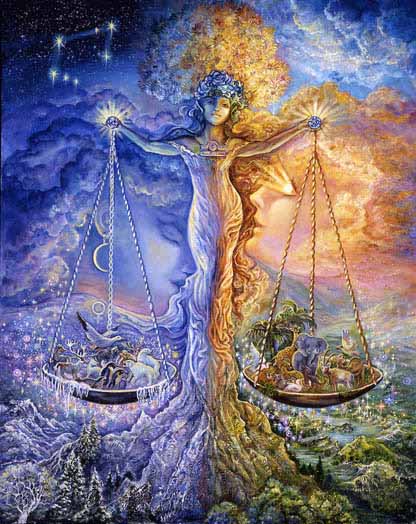
#6 Fall Feast To Be Fulfiulled in Christ - Our Day of Atonement
Once a year, the high priest presented himself to God on behalf of the people, following the sacrificial requirements in order to atone for his own sins, the sins of his family, and the sins of the people of Israel. There was a yearly requirement to perform this sacred duty because until the coming of the Messiah, the shedding of the blood of the perfect Lamb who was promised to come and deal with the sin problem had not yet taken place.
The establishment of the Day of Atonement with the various sacrificial rituals, all pointed to one individual, Jesus the Messiah. The book of Hebrews spends a great deal of time outlining the fact that the sacrificial system was a temporary goal that was leading to a time when the Perfect Lamb of God would come to deal with the sin problem. No longer would there be a need to shed the blood of an animal or to send an animal into the wilderness. At the cross, the shed blood of the Lamb of God atoned for our sins before a Holy God.
Yom Kippur, "the Day of Atonement" provides prophetic insight regarding the final return of the Messiah, the restoration of national Israel and the final judgment of the world. A great host of people, Jews and Gentiles, will be saved when Jesus physically returns to earth to rule and turns swords into plowshares. The NT refers to the Day of the Lord as Christ's return in glory at the end of the age... ie. the 7 year tribulation period's end at the battle of Armageddon when He again, saves Israel from destruction and sets up His 1000 year reign in Jerusalem. Enoch, the seventh from Adam, prophesied of this event when we return with Him "See, the Lord is coming with thousands upon thousands of his Holy ones." Yes, this will be 7 years after being caught up with Him!
Interestingly, the Yom Kippur War (October 1973) historically fell on Yom Kippur. The war, which started on the holiest day in the Jewish calendar, the Day of Atonement, was the fiercest Arab-Israeli war since the 1948 War of Independence. Egypt and Syria attacked Israel, catching Israel off guard. Long range guns firing at Syrian targets on the northern front (Photo: GPO) The war was so called because it started on the holiest day in the Jewish calendar, the Day of Atonement (October 6, 1973). It came almost as a complete surprise and warning notice was given too late for an orderly call-up of the reserves before zero hour. But a miracle happened as God intervened in the same miraculous way He saves His people now and in future, from destruction... through His offering of Himself as our Atonement.
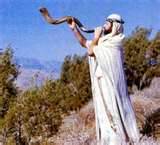
#5 Fall Feast To Be Fulfilled in Christ - Our New Beginning
The Feast of Trumpets is the first of the fall feasts. The Jewish people call this feast Rosh Hashanah, which literally means "Head of the Year," and it is observed as the start of the civil year (in contrast with the religious year which starts with Passover) on the Jewish calendar.
The Feast of Trumpets is so important in Jewish thinking that it stands alongside Yom Kippur ("Day of Atonement") to comprise what Judaism calls "the high holy days" on the Jewish religious calendar. It begins the "ten days of awe" before the Day of Atonement. According to Leviticus 23:24-27, the celebration consisted of a time of rest, "an offering made by fire," and the blowing of the trumpets.
Trumpets depicts the Rapture of the Church and the judgment of the wicked.
The interval of time between the last of the spring feasts (Pentecost) and the first of the fall feasts (Trumpets) corresponds to the present Church Age. In other words, we are presently living between Israel's fourth and fifth feasts. The outpouring of the Holy Spirit at Pentecost started the Church Age; and Trumpets, which will signal Christ's second coming to rapture the Church and judge the wicked, will end the Church Age.
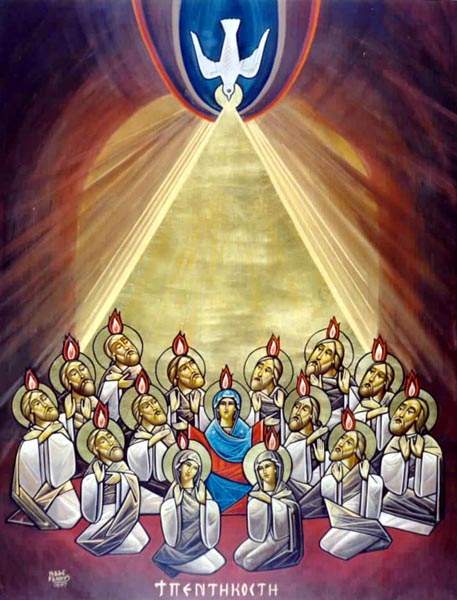
#4 Spring Feast Fulfilled in Christ - Our Feast of Weeks (Pentecost)
The Feast of Weeks is a symbolic festival which pointed to the coming of the Holy Spirit and the birthday of the Church. The Son of God had been crucified on the Day of Passover and had risen from the grave on the Day of Firstfruits. He then spent forty days with His disciples in post-resurrection ministry (Acts 1:3). Pentecost, or the Feast of Weeks, is so named because it is calculated by counting a period of seven weeks from the Sabbath after the Passover to the day after the seventh Sabbath (i.e. 50 days). Thus Pentecost always falls on the first day of the eighth week (i.e. on a Sunday)
Immediately after forty days, Jesus informed them that it was necessary that He leave them and ascend to His Father in Heaven (in order to apply the benefits of His once and for all sacrifice). However, He told His disciples that they would not be left abandoned and comfortless. He would then send them His Holy Spirit who would come alongside to help in His absence (John 14:16-17). : The timing of this would concur with what had been written thousands of years earlier.
"From the day after the Sabbath, the day you brought the sheaf of the wave offering, count off seven full weeks. Count off fifty days up to the day after the seventh Sabbath, and then present an offering of new grain to the LORD" (Leviticus 23:15-16).
The disciples were commanded to tarry at Jerusalem until He came (Acts 1:4), and they knew exactly how long they would have to wait. The coming of the Holy Spirit would occur on the next Jewish holiday - a festive time when Jews from different countries were to be in Jerusalem to celebrate the completion of the harvest season and the offering of their "first-fruits" to God. This annual feast was none other than Shavuot or the Feast of Weeks. The disciples waited as they were commanded; however, their wait was not long - only ten days. And then it happened. The Spirit of God descended on those first-century believers and so enabling the very ability of man to offer himself by way of the Holy Spirit to the the work of Christ upon the Cross.
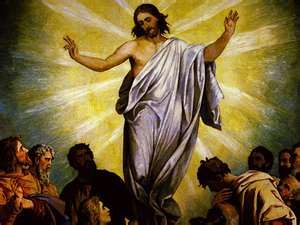
#3 Spring Feast Fulfilled in Christ - Our First Fruits
The third feast occurs on the second day of the Feast of Unleavened Bread; it is called the Feast of Firstfruits. Firstfruits speaks of the Lord's triumphant resurrection; death simply could not hold her foe. On the third day, Jesus rose victoriously from the grave.
The apostle Paul referred directly to this when he issued the triumphant truth: "But now is Christ risen from the dead and become the first fruits of them that slept" (I Corinthians 15:20). Paul had in mind the first sheaf (firstfruits) of the barley harvest (Leviticus 23:10). When God accepted the firstfruits, they became the guarantee that the rest of the crop would indeed be harvested, for Jesus (Yeshua) Himself is the "first fruits" (I Corinthians 15:23). Although a number of people mentioned the Bible were resurrected from the dead (including Jairus' daughter and Lazarus), they simply died again in due season. However, Jesus was the first to be resurrected from death and the grave, never to die again. He alone is the "Firstfruits."

#2 Spring Feast Fulfilled in Christ - Our Unleavened Bread
The following day (after Passover), on the fifteenth of the Hebrew month of Nisan, God appointed another festival. This feast would last seven days and be called the Feast of Unleavened Bread. On the first night, and again on the seventh, there was to be a time of convocation (meeting) between God and man.
The Lord Christ Jesus was crucified on the cross at Golgotha on the day of Passover. He was then buried in a newly hewn tomb donated by Joseph of Arimathea. However, unlike all other corpses, the body of Jesus (Yeshua) would not decay in the grave. There would be no decomposition of His body, no, none indeed. God the Father would not "allow thine Holy One (His Son Jesus) to see corruption (Psalm 16:10; Acts 2:27). The Feast of Unleavened Bread proclaims that Christ's physical body would not experience the ravages of death while in the grave; for He was sanctified (set apart) by God the Father.
Peter 3:18-19 states, "For Christ died for sins once for all, the righteous for the unrighteous, to bring you to God. He was put to death in the body but made alive by the Spirit, through whom also he went and preached to the spirits in prison." The word "preached" in verse 19 is not the usual word in the New Testament to describe the preaching of the gospel. It literally means to herald a message. Jesus suffered and died on the Cross, His body being put to death, and His spirit died when He was made sin. But His spirit was made alive again through the resurrection and He yielded it to the Father. According to Peter, sometime between His death and His resurrection, Jesus made a special proclamation (I believe a shout of the victory over evil)to "the spirits in prison."
Sunset began the 15th day of Nisan. Jesus was buried, just in time for the Feast of Unleavened Bread. But in the grave His body did not decay or see corruption. That Passover the sinless unleavened 'Bread of Heaven' was revealed as that long awaited perfect sacrifice for sin. Thus He fulfilled the Feast of Unleavened Bread.
